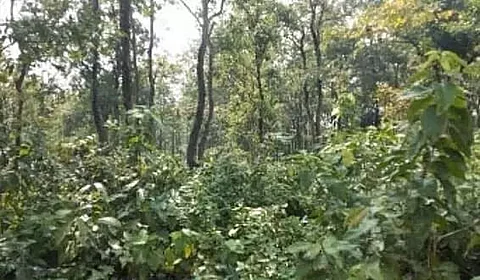
- Home
- Live Blog
- Breaking News
- Top Headlines
- Cities
- NE News
- Sentinel Media
- Sports
- Education
- Jobs

NEW DELHI: The India State of Forest Report (ISFR) 2021 has vindicated what activists, lawyers and academicians have been saying all along - Arunachal Pradesh, which is the second largest forested State in India, is losing its primary forests and that, too, on a large scale every passing year.
As per the ISFR 2021 — brought out by the Forest Survey of India (FSI) and released on January 13 — Arunachal Pradesh that has a geographical area (GA) of 83,743 sq kms with its 16 hill districts, (total number 25, the recently bifurcated not shown separately in the report) has witnessed a loss of 257 sq kms of forest cover compared to the 2019 assessment.
As per ISFR 2021, the total forest cover (within and outside the recorded forest area) is 66,430.67 sq kms (79.33 per cent of GA). Of that, very dense forest is 21,058.37 sq kms (25.15 per cent), moderate dense forest is 30,175.56 sq kms (36.03 per cent), open forest is 15,196.74 sq kms (18.15 per cent). Scrub, not counted in total, is spread over 796.98 sq kms (0.95 per cent).
Arunachal Pradesh is considered as one of the forest rich states in eastern Himalayas. The state has about 20 per cent species of the country's fauna, about 4,500 species of flowering plants, 400 species of pteridophytes, 23 species of conifers, 35 species of bamboos, 20 species of cane, 52 species of Rhododendron and more than 500 species of orchids. Two National Parks and 11 Wildlife Sanctuaries constitute the Protected Area network of the state covering 11.68 per cent of its geographical area. Large areas fall under community forests.
Being an entirely tribal state, forests have been the mainstay for livelihood of local people dependent on forest resources. However, over the years, developmental activities, and practises such as jhuming have increased the pressure on forests consistently.
As per the ISFR-2019, the forest cover was 66,687.78 sq kms (79.63 per cent); the ISFR-2017 said the total forest cover was 66,964 sq kms (79.96 per cent) while the ISFR-2015 said the total forest cover was 67,248 sq kms (81.21 per cent).
The only reason mentioned for the negative change detected in the 2017 assessment was: "A decrease of 190 sq kms observed in the forest cover of the state can be attributed to shifting cultivation and developmental activities."
A December 2021 report by Arunachal Pradesh's Department of Environment and Forests submitted to the National Green Tribunal in the 2019 case filed by an anti-logging activist Jorjo Tana Tara in connection with illegal forest felling mentioned that during 2009-2019, there has been a decrease of 934.97 sq kms in moderately dense forest in the whole of Arunachal Pradesh, while there has been an increase of 115.81 sq kms of area under scrub forest, 29.61 sq kms of area under open forest and 244.09 sq kms in very dense forest.
This report also mentioned that the main reasons for the negative change in forest cover are shifting cultivation and diversion of forest land for developmental purposes. A total of 221.11 sq kms of area has been diverted for non-forestry activities after clearance under Forest (Conservation) Act, 1980 in these ten years, the report submitted to the NGT said.
Environmental lawyer Ritwick Dutta, who represents Jorjo Tana Tara in the NGT at the Principal Bench, said, "The report claims that the Government is taking action, but we have challenged that." (IANS)
Also Watch: